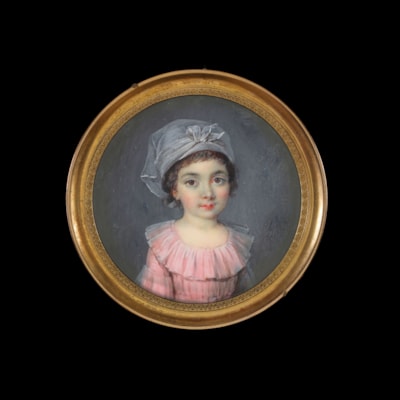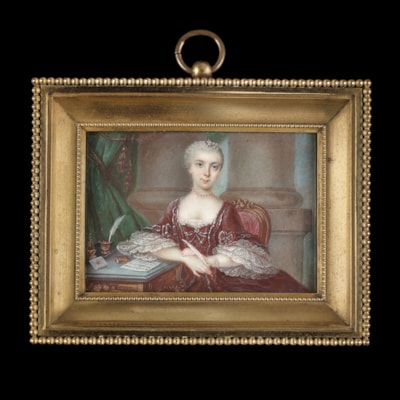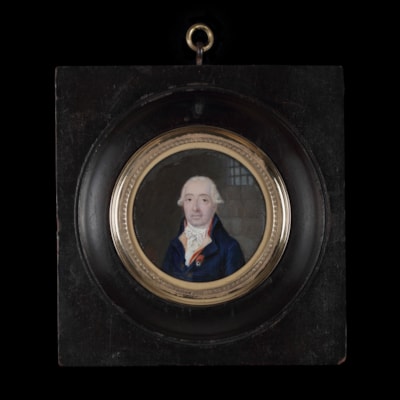FRENCH SCHOOL (18th century)
Boxwood Roller Print with royal arms, hunting scenes, and military emblems
Boxwood
Cylindrical, 73 mm (2 3/4 in.) in length
£2,150
One terminal is carved with the arms of France — three fleurs-de-lis under a royal crown — encircled by the chain of office of the Order of Saint Michael, affirming the dynastic and monarchical identity of the piece. The opposite end bears a cartouche with the initials N P above a cannon and military trophies, framed by foliage, further embedding martial associations within the design.
Rollers of this type were used to impress designs into dough or sugar paste for festive and commemorative cakes, their motifs embedding royal and religious iconography into domestic ritual. The combination of heraldic arms, Passion symbols, hunting, and martial scenes reflects the close interconnection of monarchy, faith, and everyday life in ancien régime France.
Comparable examples are published in Edward H. Pinto, Treen and Other Wooden Bygones (London, 1952), fig. 186 and p. 187, where French 18th-century roller prints are discussed. Notably, Pinto records examples stamped Guillaume A. Gorge, 1747 and Josephe Mignon, 20 Janvier 1748, offering rare evidence for identified makers of such carved tools.

shipping notice
Worldwide shipping is included in all prices.
The Limner Company does not accept any responsibility for import duty, this is to be paid by the buyer.
Some stock items contain materials from endangered species which are governed by CITES regulations and will require a permit to export outside of Great Britain. If a certificate of export is required then this will be the responsibility of and paid for by the buyer .
you may also like



 +44(0)7983510056
+44(0)7983510056











